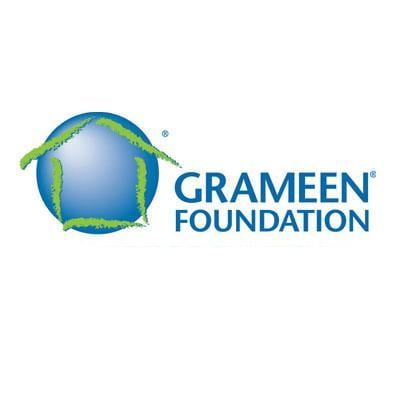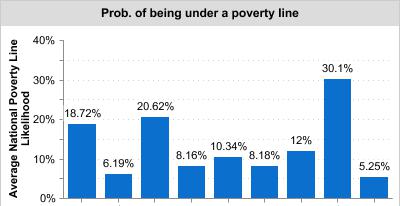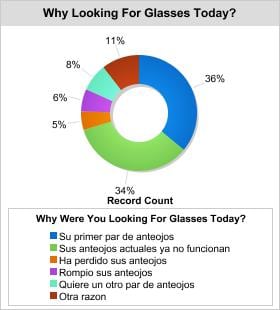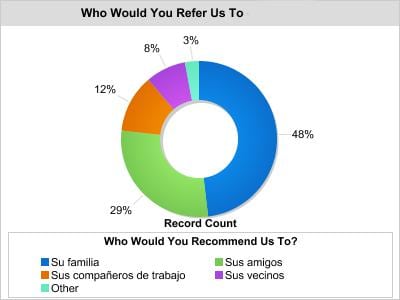 Steve Wright, Vice President, Poverty Tools and Insights at Grameen Foundation joins the discussion we raised yesterday on beneficiary insight. There, we addressed an article published in Alliance Magazine by David Bonbright, expressing the concern that Markets For Good may go wrong, arguing that “beneficiaries are not part of the enterprise in a direct or meaningful sense.” See the links above to learn how we have considered this critical topic from the outset. Below, Steve joins in… and joins the themes: beneficiary insight and our current theme, evaluation. He addresses a few difficult questions (and leaves us with more) regarding data-collection methodologies and what they should mean for beneficiaries.
Steve Wright, Vice President, Poverty Tools and Insights at Grameen Foundation joins the discussion we raised yesterday on beneficiary insight. There, we addressed an article published in Alliance Magazine by David Bonbright, expressing the concern that Markets For Good may go wrong, arguing that “beneficiaries are not part of the enterprise in a direct or meaningful sense.” See the links above to learn how we have considered this critical topic from the outset. Below, Steve joins in… and joins the themes: beneficiary insight and our current theme, evaluation. He addresses a few difficult questions (and leaves us with more) regarding data-collection methodologies and what they should mean for beneficiaries.
…
There is a very tired and self-congratulatory axiom from the for-profit community that declares “nonprofits should act more like businesses.” Now that business-like includes illustrative examples of LIBOR rigging, mortgage securities collusion and too-big-to-fail we have the opportunity to throw out the social vs. private distinction and focus on value creation. This is the foundation of Markets for Good as I understand it. How can we best provide value to customers? The difficulty here is that value is subjective and the goal is to provide value as realized by the customer. Fortunately, over the last few years we have seen two specific powerful innovations that provide a methodology for any business to be more focused on the value that is realized by their customers – Human Centered Design and the Lean Startup Methodology. Both of these have been practiced to great effect by every stripe of organization. I bring this up to make the very specific and simple point that these are the methodologies that are essential to ensuring not just the inclusion but the increased agency of the beneficiaries of Markets for Good.
Let’s take the very specific example of poverty, the poor and organizations that intend to alleviate poverty. Whether it’s fair trade, social enterprise, microfinance, a health clinic, or an agricultural co-op, any business that intends to help the poor must be able to measure poverty. Without knowing if your customers are objectively poor you cannot know if you have effectively designed your products and services, or optimized your business processes, to provide the greatest possible value to your customers. The Progress out of Poverty Index® (PPI®) – managed by the Grameen Foundation – is a survey and scoring system that uses specific financial expenditures as indicators to accurately estimate a household’s level of poverty as compared to an internationally recognized poverty line. By using the PPI an organization can answer question like:
What percentage of my customers are below the National Poverty Line?
Are my customers moving relative to poverty over time?
Exactly how are my poorest customers interacting with my business?
With the PPI any business or organization that works with the poor can easily embed poverty measurement into its operations. Measuring poverty can provide any organization that intends to alleviate poverty the data they need to manage their business. CARD Bank in the Philippines implemented the PPI and were able create a dramatic change in the adoption of voluntary savings accounts by their poorest customers.
“We are excited about the additional information the PPI gives us on our customers. Because of the richer analysis we are now able to do, we can be confident that we are designing savings products that suit the needs of the poor and reaching our overall poverty targets.” said Dolores M. Torres, president and CEO of CARD Bank.
Data Should “Fall Out” of your Social Business
If your business focuses on providing value to be realized by your customer then the data that falls out of the act of managing your business becomes a reasonable proxy for the data you need to assess the performance of your business. This is the principle of manage what matters.It is critical to intentionally manage your business in a way that the activities you engage in are explicitly designed to provide the value that is realized by your customers. Then, as you work with your customers to understand how well they are served by your business, any change you make to your products, services or processes are also changes made to more effectively advance your mission. Measurement and management, in a customer focused business, are integral.
A great example of an organization that is doing this well is VisionSpring. For over a decade, Vision Spring has been fighting poverty by selling affordable eyeglasses to the poor. Historically it has been too difficult or too expensive for them to get good data about their customers. While this data is clearly valuable, its value to VisionSpring must always be balanced against the cost of collecting the data and therefore the cost of running the business. It is a very straight forward ROI calculation. Like many social enterprises in the developing world, VisionSpring sells its products in difficult and emerging markets where the cost of doing business is high especially when the intent is to reach underserved populations. Using Grameen Foundation’s Taro Works product to collect customer information at the point of sale, VisionSpring now has access to data that gives them the insight they need to continuously improve their products and services.

This chart shows the likelihood that a customer is below the National Poverty Line for each of 9 different regions where VisionSpring sells reading glasses.

In this chart VisionSpring for the first time has access to their customers motivations in El Salvador.

“Would you Refer” metrics are known to be very good indicators of customer satisfaction.
Markets for Good
The thesis of this post and the goals of the organizations mentioned above is that a good business – and a good market – is one that strives to provide value that is realized by customers. This is the obvious and ultimate goal. It is also true that there is a broad group of stakeholders beyond the social enterprise and its customers that is integral to the work of markets for good and essential if we are to approach solutions to some of the world’s most intractable problems. The great challenge that is before us is to figure out how to align the incentives. How can competitors focusing on market solutions to clean water collaborate enough to ensure that their work is additive if not exponential? How can funders and investors align their data needs with those of the interventions that they are funding so that both are taking and the same risks and gaining the same rewards? Maybe most problematically, how can we co-opt profit maximizing markets to scale this disruptive innovation of delivering value as realized by the customer?
